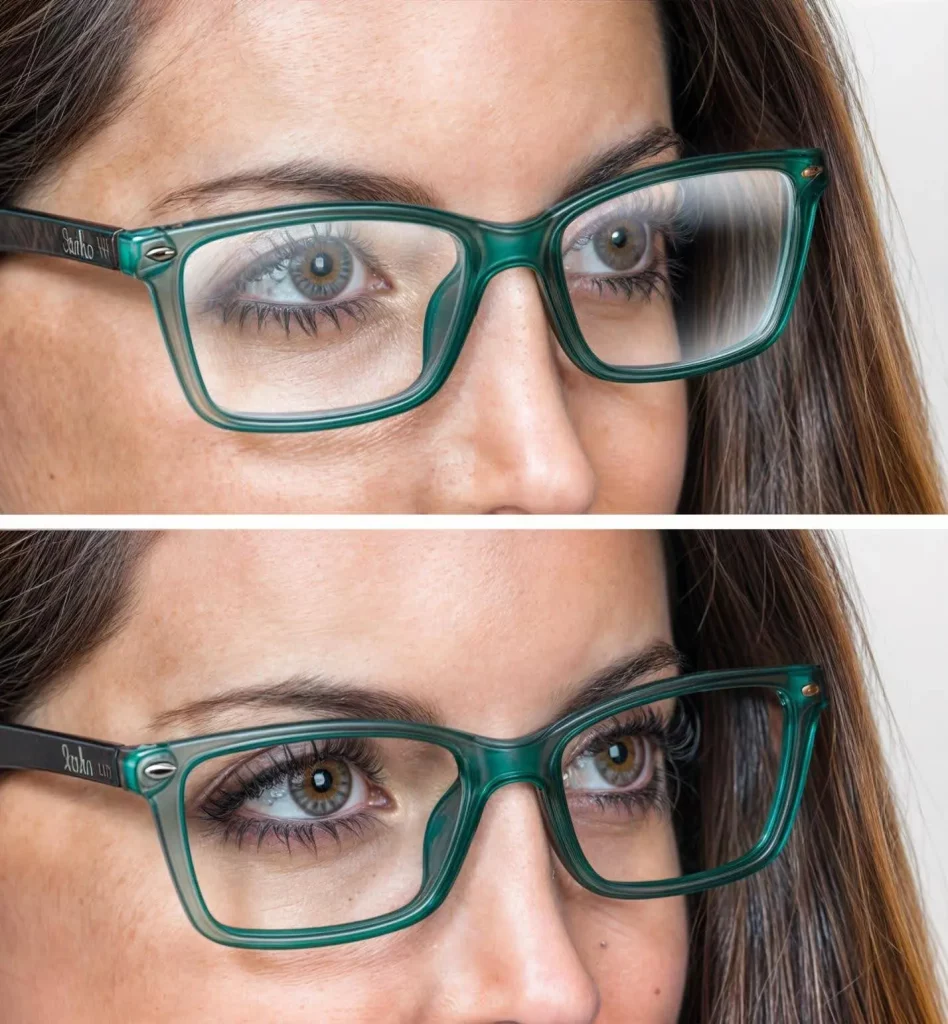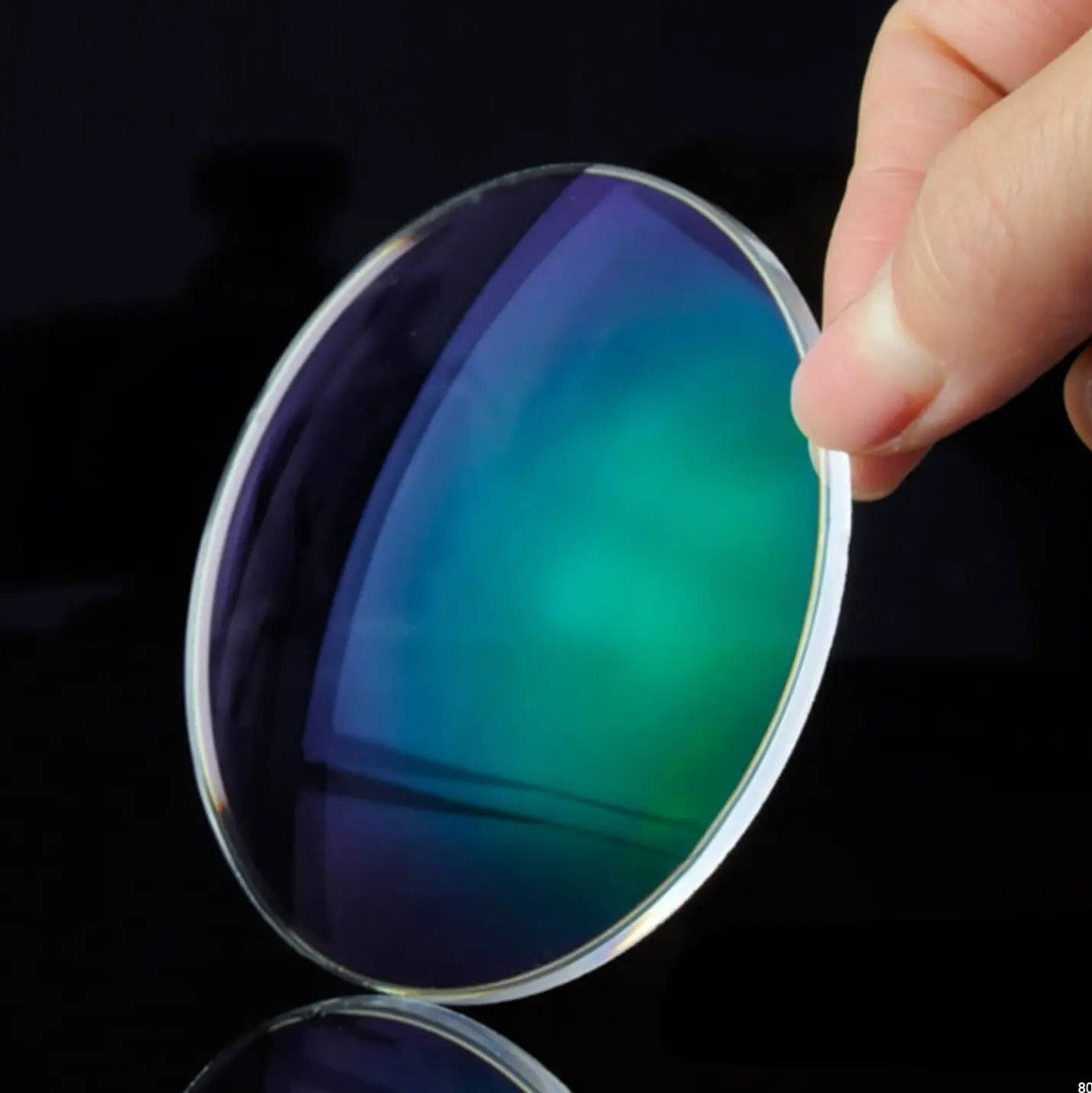In the optics world, technological advances have not only transformed how we see but also how we interact with our environment. Among these advances, anti-reflective (AR) coatings have played a crucial role, significantly improving visual clarity and comfort for lens users. This article delves into the science behind these coatings, explores the latest innovations, and examines why they are essential for any type of lens.
The Science of Anti-Reflective Coatings
AR coatings work on the principle of destructive interference and the matching of refractive indices to minimize reflections on lens surfaces. By applying multiple layers of dielectric material, these coatings allow more light to pass through the lenses, reducing unwanted reflections that can obstruct vision and cause distractions. The result is clearer and more precise vision, especially in low light conditions or at night.

Undeniable Benefits
Adopting AR coatings offers multiple benefits, from improving visual clarity and reducing glare to providing a more attractive aesthetic. Lens users can enjoy interference-free vision, which is particularly valuable for activities such as night driving and prolonged work in front of digital screens. Moreover, by eliminating reflections, lenses with AR coatings allow for better visual communication, making the user’s eyes more visible to others.

Innovations on the Horizon
The field of AR coatings is constantly evolving, with research seeking new ways to improve their effectiveness and durability. A notable example is the development of coatings inspired by nature, such as those mimicking the eyes of moths. These coatings use hollow carbon spheres based on sugar to absorb microwave radiation almost perfectly, promising a new generation of more efficient and lighter AR coatings.
Market Leaders
The global AR coatings market is dominated by several key players who have pioneered the development and application of these technologies. Companies like Essilor International S.A., Hoya Corporation, and Carl Zeiss are recognized for their innovations in this field, offering solutions that meet the needs of various users. These companies continue to invest in research and development to provide AR coatings that are more effective, durable, and suitable for a wide range of applications.
Versatile Applications
Beyond eyewear, AR coatings find applications in a variety of fields, including electronics, the automotive industry, and solar energy. In each of these sectors, AR coatings enhance the performance and efficiency of products, from electronic device displays to solar panels and car windshields.
A Solution for Everyone
The universal recommendation of AR coatings for all types of lenses underscores their undisputed value in improving the visual experience. Regardless of the lens material or prescription, AR coatings offer benefits that everyone can enjoy. Their ability to improve vision, reduce eye fatigue, and provide an enhanced aesthetic makes them a smart choice for any lens user.
Towards the Future
Looking to the future, it is clear that AR coatings will continue to be an essential component in the design and manufacturing of optical lenses. With ongoing research and development in this field, we can expect to see innovations that offer even greater clarity, durability, and performance. As these technologies evolve, lens users will benefit from even more effective and tailored optical solutions.
The convergence of optical science with nature-inspired innovations and advanced technologies promises to take AR coatings to new horizons. As these advancements materialize, lens users will benefit from significant improvements in visual quality and comfort, reaffirming the vital role of anti-reflective coatings in the world of optics.
In conclusion, anti-reflective coatings are more than an improvement for lenses; they are a revolution in the way we interact with the visual world. Through continuous improvement and innovation, these coatings are destined to play an increasingly important role in our daily lives, improving not only our vision but also our quality of life. The promise of a future where unimpeded vision is accessible to all is getting closer, thanks to the dedication of scientists and leading companies in the field of optics.




